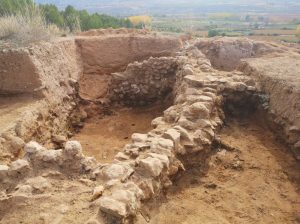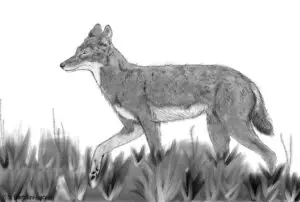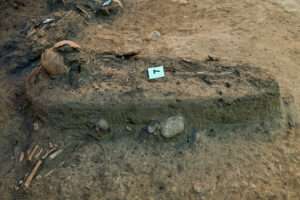A 7,000-year-old prehistoric grave with 38 decapitated skeletons could contain the remains of victims of Stone Age headhunters, it has emerged.
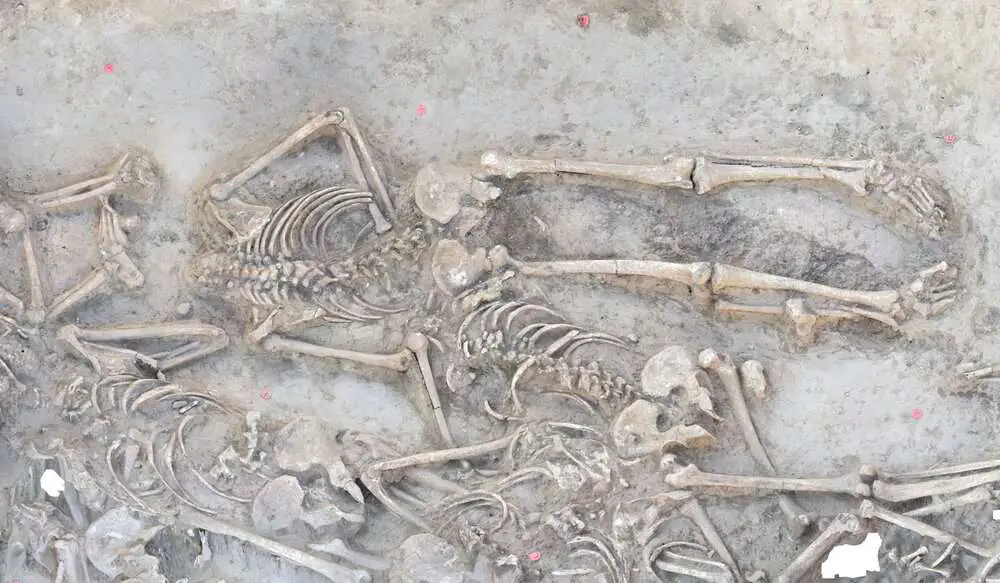
Astonished archaeologists unearthed the mass grave in Slovakia where the bodies were layed together in a 15-square-metre-long (161-square-foot) ditch in an ancient settlement in Vrable, near the Nitra Region, Slovakia.
All had been decapitated and buried without their heads apart from the body of one child.
They were all well-preserved, according to archaeologists from the Collaborative Research Centre (CRC) 1266 of Kiel University (CAU), Germany.
For the purposes of the research, the German experts collaborated with the Archaeological Institute of the Slovak Academy of Sciences, in the city of Nitra.
Project leader Prof Dr martin Furholt said in a statement obtained by Newsflash: “We assumed to find more human skeletons, but this exceeded all imaginations.”
The site of Vrable-Ve’lke Lehemby dating back to 5,250 BC, was reportedly one of the largest settlement sites of the Early Neolithic in Central Europe.
Artifacts found in the area are associated with the Linear Pottery Culture which represents a major event in the initial spread of agriculture in Europe.
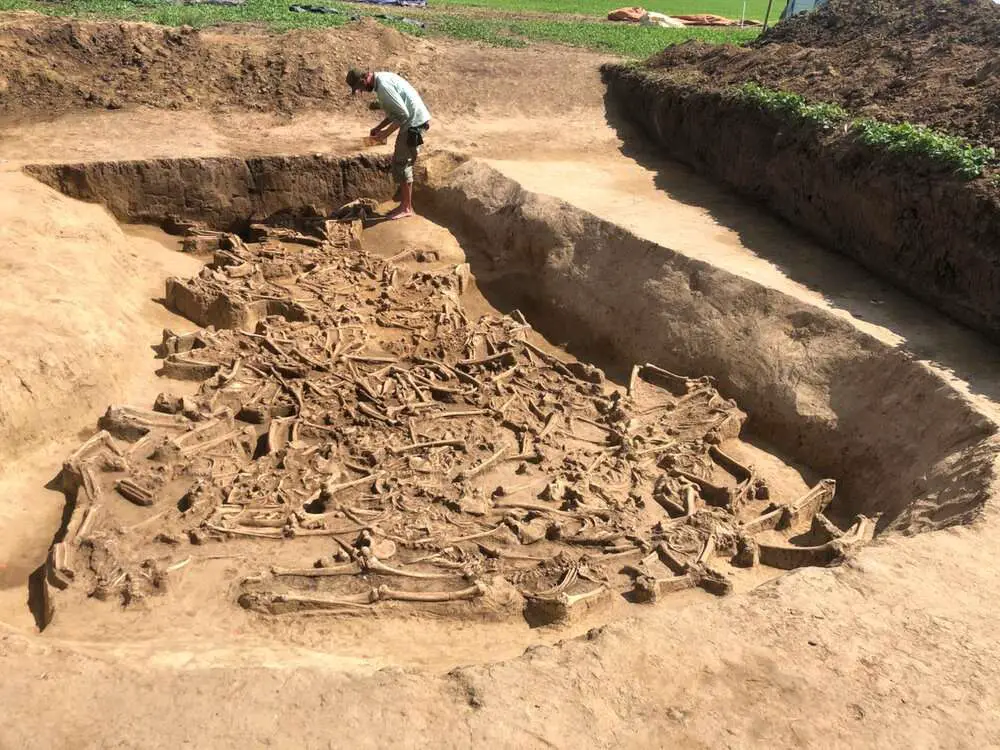
A total of 313 houses in three neighbouring villages were found in the area out of which up to 80 houses were inhabited at the same time, indicating that the settlement was exceptionally populated at its peak.
In the current study, all of the individuals were stacked one on top of the other, stretched out on their stomachs, or crouched on their sides.
Their position reportedly suggested that they were carefully buried, but were thrown or rolled into the ditch.
Furholt said: “In mass graves with an unclear positioning, the identification of an individual is usually based on the skull, so for us this year’s find represents a particularly challenging excavation situation.”
But despite detailed analysis, none of them could reportedly determine how, when or why the people’s heads were removed after they were uncovered in the summer of 2022.
Kiel University anthropologist Dr Katharina Fuchs said: “Several individual bones out of anatomical position suggest that the temporal sequence might have been more complex.
“It is possible that already-skeletonised bodies were pushed into the middle of the trench to make room for new ones.
“In some skeletons, the first cervical vertebra is preserved, indicating careful removal of the head rather than beheading in the violent, ruthless sense – but these are all very preliminary observations that remain to be confirmed with further investigation.”
Additional DNA analyses, radiocarbon dating, and stable isotope analyses should reveal more about the dead, including their age, place of origin, as well as if their burial practice was of any social significance at the time.
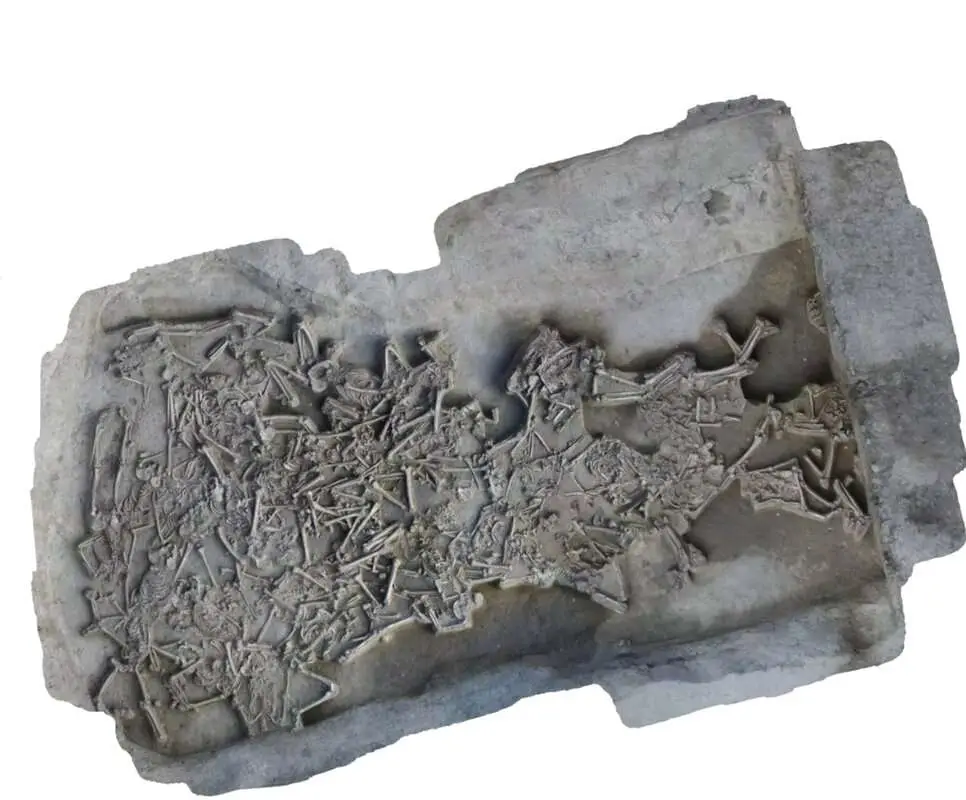
Project leader Dr Maria Wunderlich said: “It may seem obvious to assume a massacre with human sacrifices, perhaps even in connection with magical or religious ideas.
“Warlike conflicts may also play a role, for example, conflicts between village communities, or even within this large settlement.
“Did these people fall victim to head-hunters, or did their fellow villagers practice a special death cult that had nothing to do with interpersonal violence?
“There are many possibilities and it is important to remain open to new insights and ideas.

“But it is indisputable that this find is absolutely unique for the European Neolithic so far.”

